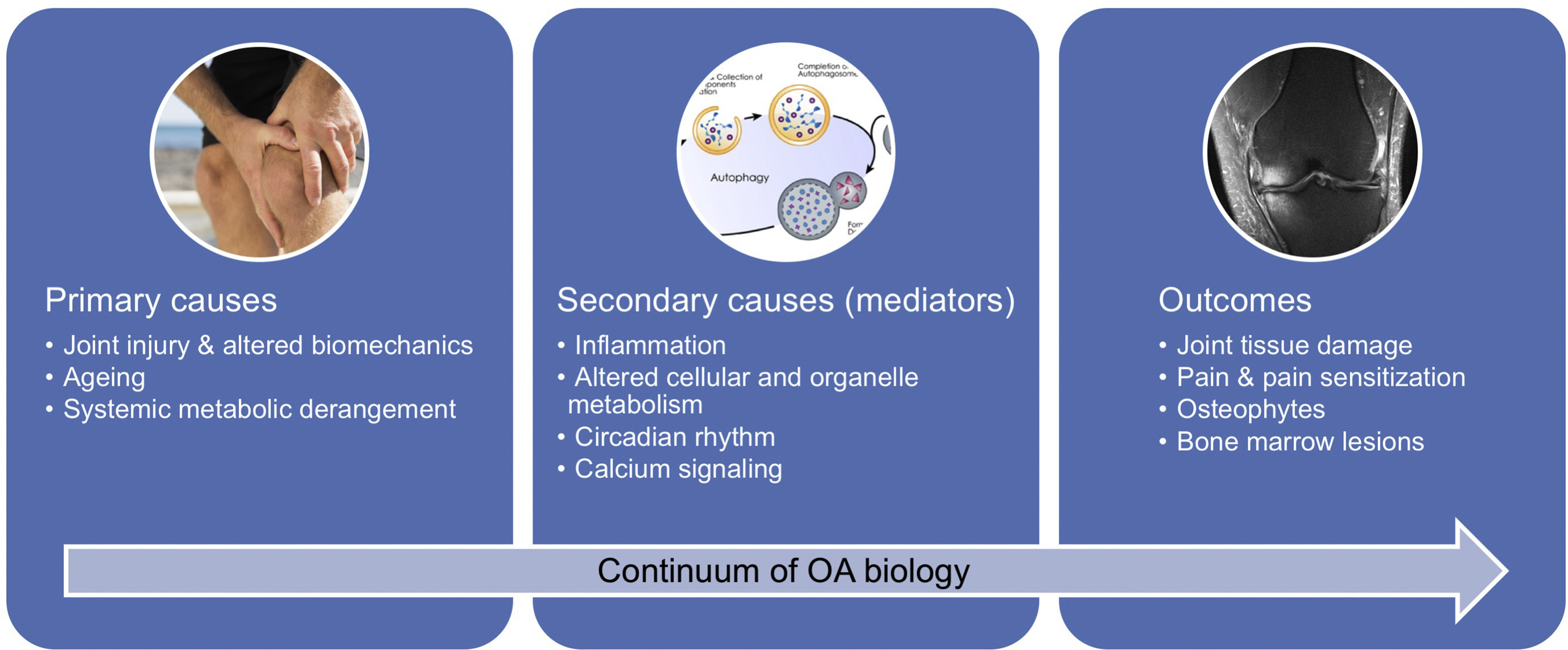Research
Contact Us
Phone: 519.661.2111 x83768
Email: Tom.Appleton
@sjhc.london.on.ca
*All patient inquiries should be directed to:
268 Grosvenor St, London, ON, N6A 4V2
T: (519) 646-6319
F: (519) 646-6406
Related Links
- Physiology and Pharmacology
- Bone and Joint Institute
- SJHC Rheumatology Centre
- Schulich Dentistry/Research
- Schulich Medicine/Dentistry
- Schulich Graduate Studies & Postdoctoral Affairs
Mechanisms Regulating Synovial Biology in Osteoarthritis
What is Osteoarthritis?

Most importantly, the impact of OA is the chronic symptoms that people experience. As a result, most people live a less active lifestyle. This leads to increased risk for multiple other chronic diseases, including heart disease and some research suggests this may even increase the risk of cardiovascular events. Unfortunately, there are currently no approved medical treatments that stop or slow the progression of OA-related joint damage and loss of joint function. It is our central purpose to discover and develop new targets for effective and safe disease modifying medical OA treatments.
Contrary to popular belief, OA is not a disease of wear and tear on the joint. We now know that OA affects all joint tissues including bone, cartilage, synovium, ligaments, meniscus, and muscle. Multiple processes disrupt joint tissue homeostasis including altered biomechanics and mechanical signaling, cell and systemic metabolism, and local and systemic inflammation. OA is also strongly associated with ageing but shockingly, the majority of OA symptoms start in mid-adult life, usually between the ages of 35-50 (WHO Global Burden of Disease, 2010).
Conventional research in the OA field has focused on the role of cartilage and bone, but recent evidence has pointed to a role for inflammation in the onset and progression of OA. One of the main sites of inflammation in the OA joint is the synovium. Synovial inflammation includes hyperplasia and mononuclear cell infiltration, and often results in joint effusion. OA-related inflammation is a process of low-grade, chronic inflammation that softens joint tissues, making them susceptible to erosion and damage. Large cohort studies have shown that the synovitis associated with OA is an early event in the course of OA development and that the presence of synovitis in early disease is associated with OA symptoms and increases the risk of future joint damage.
Our Research Goals

The Appleton lab is focused on understanding the role of synovium in the onset and progression of OA. We use molecular biology approaches to understand mechanisms controlling inflammation and cell physiology in the synovial environment. Model systems include post-traumatic and metabolic rodent models of knee OA, and translational work in humans, including the Western Ontario Registry for Early Osteoarthritis (WOREO) Knee Study. Ongoing studies are aimed at understanding the pathophysiology of synovial cell types involved in OA-associated synovitis and how these mechanisms contribute to OA symptoms and disease progression.


